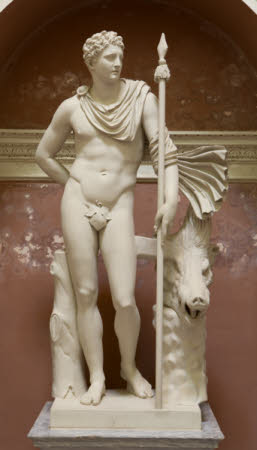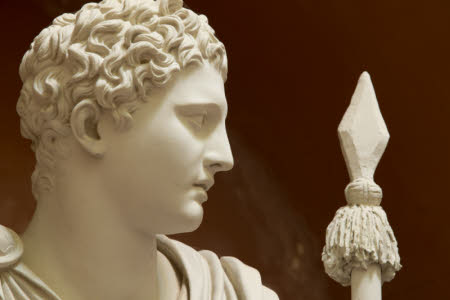Meleager
John Cheere (London 1709 – London 1787)
Category
Art / Sculpture
Date
1760 - Nov 1762 (payment)
Materials
Plaster on marble base
Measurements
2080 mm (Height); 1360 mm (Height)
Place of origin
London
Order this imageCollection
Stourhead, Wiltshire
NT 562914.1
Summary
White painted plaster sculpture on red marble pedestal, Meleager by John Cheere (1709 – London 1787), 1762. A full-length statue of Meleager after the antique, as a hunter shown with boar's head but without dog. Naked male figure with vine leaf, cap over shoulder, flowing out over his left arm. His right arm is positioned behind his back and his left arm has spear and boar head supported on tree stump, adjoined to left side of figure. The original was first recorded in 1546 in the house of Francesco Fusconi from Norcia, doctor to Popes Adrian VI, Paul III and Julius III, opposite what was to become the Palazzo Farnese in Rome and by descent through Marzia Fusconi to the Pighini family until 1770 when it was bought by Clement XIV and was in Paris between 1797 and 1816 and is now in the Vatican Museum, Rome. Payment to John Cheere in November 1762. Probably cast from moulds obtained from Rome by Matthew Brettingham junior before 1754. Pendant to Diana opposite.
Makers and roles
John Cheere (London 1709 – London 1787), sculptor Matthew Brettingham the Younger (1725 - 1803), mould maker
References
Haskell and Penny 1981: Francis Haskell and Nicholas Penny, Taste and the Antique, The Lure of Classical Sculpture 1500 - 1900, New Haven and London, 1981, 60, p. 263



